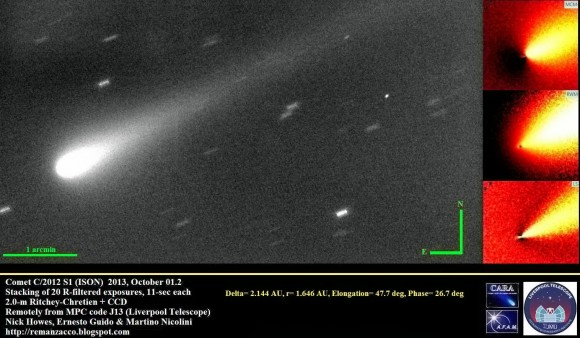Introduction
To our knowledge, Earth is the only known planet to contain life. Considering we have discovered thousands of planets since the discovery of the first exoplanet in the mid-1990s, this is a bit shocking. Since then, we have found multiple methods of detecting planets around stars other than our Sun, the most prominent of which are planetary transits, and Doppler shifts, also known as radial velocity measurements. Recently, the technology to directly image the planets has been invented, but these images are still very low resolution and does not provide much information about the planets. In order to possibly contain life, a planet must be within a star’s habitable zone. A habitable zone is the are of a star’s orbit where liquid water could potentially exist on its surface. NASA’s Kepler mission has been very successful discovering planets that are potentially habitable, notably Kepler-22b. Conversely, it has discovered many more planets that have very extreme environments.
Kepler-70: A Dying Star
Far away in the constellation Cygnus, 3,849 light-years to be precise, lies a subdwarf-B star known as Kepler-70. It is a much smaller star than the Sun, with a radius of 0.203 solar radii, only 1/5 of the Sun. It is also much less massive at 0.496 solar masses. The luminosity is, however, 18.9 times greater than that of the Sun. For the luminosity of the star, the following equation was used:
In this equation, r is the radius of the star, σ is the Stefan-Boltzmann constant, and T is the average temperature of the star. Kepler-70 is an ancient star, having evolved completely through the main sequence and red giant stages of its life. Estimates determine that Kepler-70 exited the red giant stage 18.4 million years ago. Since then, the star’s core has been fusing Helium. Once the supply is exhausted, the star will complete its lifetime by contracting into a white dwarf.

An example of the brightness dip from a transiting planet.
Discovering Planets around Kepler-70
When a planet’s orbit lies on the same orbital plane viewable from Earth, the planet will cross in front, or transit, the star once every orbital period. This causes the observed brightness of the star to drop relative to the size of the both the star and the planet. Unlike other planetary detection methods, this allows the transit method to discern the radius of a transiting planet. Three or four transits are required for conformation of an extrasolar planet. NASA’s Kepler mission uses the transit method to discover new planets around stars, including two that have been discovered around Kepler-70 by Stephane Charpinet. The discovery of these planets was announced on December 12, 2011.
The innermost planet, Kepler-70b, has one of the most extreme environments ever found on a planet, yet some of its characteristics are very similar to Earth. It has a very similar density at 5500 kg/m3, compared to Earth’s 5515 kg/m3. However, it is only 44% of Earth’s mass. Despite some similarities, the environment on Kepler-70b is just too hostile for any forms of life as we know it to exist there. The main obstacles, and large ones at that, standing in the way of life on Kepler-70b are its lack of an atmosphere, proximity to its host star, extreme temperatures, and it was actually inside its host star during the recent past.
What is Kepler-70b Like?
Today, Kepler-70b is not really a planet in the tradition sense. Rather, it is all that remains of a gas giant that formed with the original star system. Millions of years ago, Kepler-70b was likely a hot Jupiter, a Jovian-sized planet that orbits unusually close to its host star. In the case of Kepler-70b, the planet orbits just 0.006 AU from the star. Comparatively, Mercury orbits 65 times further from the Sun. This is far inside the inner boundary for the habitable zone of Kepler-70, both conservative and optimistic measurement, which range from 4.13-6.08 AU and 1.95-7.39 AU respectively. Usually, these orbital distances compare to those of Mercury or Venus. The inner and outer boundaries of a star’s habitable zone can be calculated using the following equations where the conservative measurement is the upper pair of equations and the optimistic is the lower two.
As Kepler-70 aged, the star expanded to become a red giant about 18.4 million years ago. Because of 70b’s extreme proximity to the host star, the planet was actually enveloped in the expanding star’s atmosphere, consequently destroying its atmosphere. Normally, planets in this situation are disintegrated by the extreme temperature and pressure. However, some Jovian-sized planets are large enough that they can actually survive. As the star exits its red giant stage and begins to shrink, the remaining iron core of the planet is all that remains. Naturally, the temperatures of such an object are extremely high. Kepler-70b currently holds the record for the hottest known planet with an surface equilibrium temperature of 7288˚K. The equilibrium temperature of a planet can be calculated using the equation:

where Ab is the albedo of the planet, D is the distance in astronomical units from the host star to the body, and L☉ is the brightness of the host star in solar luminosities. The estimated surface temperature of Kepler-70b was calculated using an assumed bond albedo of 0.1 because the true albedo of the planet cannot be determined by the transit method and remains unknown. Kepler-70b also orbits its star with one of the shortest orbital periods of any exoplanet: just over 5 hours. In order to complete its orbit this quickly, it orbits at just under 5% of light speed.
Can Life Exist on This Planet?
Life as we know it cannot exist on Kepler-70b in its current state. It orbits Kepler-70 far inside both the conservative and optimistic habitable zones, roughly 65 times closer to its sun than Mercury to ours. Not only does this create surface temperatures that exceed any temperature on Earth where life is found, but it results in the complete lack of water in any form on the planet. In our Solar System, planets without surface water might perhaps have water vapor high in their atmosphere where conditions allow it, but Kepler-70b has no atmosphere to house water vapor. Without an atmosphere, there is also no potential energy source that organic compounds could draw from to make energy. Further evidence against life on Kepler-70b comes from the planet’s “solid”iron composition. In fact, the surface is very likely completely molten, which is hostile to life.
It is possible that life could have existed on it in the past. Scientists theorize that microbial life could exists on Jovian planets like Kepler-70b. This life would need to live in extremely high elevations in the atmosphere in order to be at habitable pressures and temperatures, as well be near the water vapor that exists there. In order to do so, it would need to be be buoyant enough to stay at that elevation. Even so, any life on the planet would have been irradiated when the Kepler-70 became a red giant. The atmosphere was completely demolished by the expanding star, and temperatures quick rose. The final nail in the coffin would have come when the planet was finally engulfed by the Kepler-70. It would be impossible for any organic compounds to survive the inside of a star. Even after Kepler-70b left the star, it has only been 18.4 million years, far too short for any life to evolve on the planet even if it its conditions were perfect.
Additionally, Kepler-70b is orbiting a star very late in its lifetime. Soon, cosmically speaking, this star will become a white dwarf, entering the final stages of its life. Observations of planets orbiting similarly sized stars, especially this close, show that the planets become tidally locked far sooner than it would take for life to evolve on the planet. This holds true even for planets in the habitable zone, let alone planets only 0.006 AU from the star. Once the planet becomes tidally locked, it will be impossible for life to evolve.
What About Sci-Fi Life?
Take a step back for a second and imagine a universe where life could evolve and adapt to changing environment conditions very quickly. For example, if the microbial life hidden in the clouds of Kepler-70b became extremely heat resistant. This shell of theirs would be able to shield them from the 28,000˚K interior of Kepler-70 while also protecting them from the immense pressure. They would be able to swim, if you will, freely in the now molten surface of what used to be a gigantic Jovian planet. As the planet emerged, the drop in both pressure and temperature allowed these organisms to drop their protective shells and float along the surface of the iron core freely. If only such life could exist, one could argue that it would be more evolutionarily successful than any species on Earth.
Conclusion
Unfortunately, for Kepler-70b, there are too many factors standing in the way of life. At least, life as we know it could not exist there. If its complete lack of liquid water and location far outside of the star’s habitable zone was not enough, then the scorching temperatures and five hour day surely prevent life from evolving there. Not to mention that the planet was literally inside a star. Any life that could have possibly arisen there was immediately stopping in its evolutionary track, and any change of life appearing again are very slim. Kepler-70b can hold the record for hottest temperature, shortest orbital period, and smallest mass, but it will not hold the record for being the first exoplanet to be home to life. That is a guarantee.
Bibliography
http://upload.wikimedia.org/wikipedia/commons/8/8a/Planetary_transit.svg
“Kepler Discoveries.” <i>NASA</i>. N.p., n.d. Web. 23 Oct. 2013. <http://kepler.nasa.gov/Mission/discoveries/>.
Anderson, Paul Scott. “Two More Earth-Sized Planets Discovered by Kepler, Orbiting Former Red Giant Star.” <i>Universe Today</i>. N.p., n.d. Web. 23 Oct. 2013. <http://www.universetoday.com/92127/two-more-earth-sized-planets-discovered-by-kepler-orbiting-former-red-giant-star/>.
“Planet KOI-55 b.” The Extrasolar Planet Encyclopedia. N.p., n.d. Web. 23 Oct. 2013. <http://exoplanet.eu/catalog/koi-55_b/>.
Talcott, Richard. “Top 10 Exoplanets.” Astronomy 1 Oct. 2013: 22-27. Print.





 A visual guide to a star’s habitable zone based on its size. Source:
A visual guide to a star’s habitable zone based on its size. Source: 






